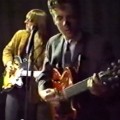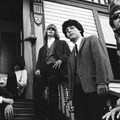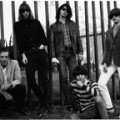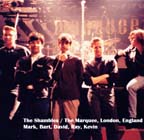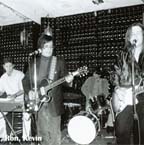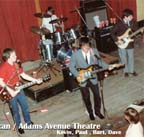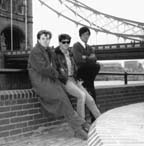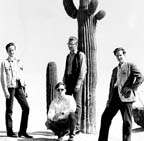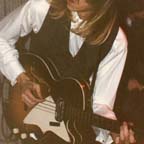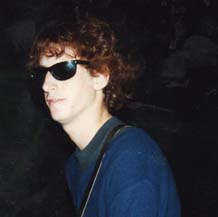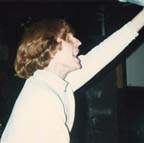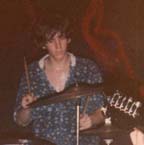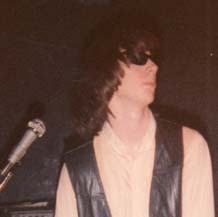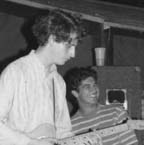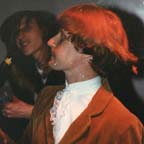 Two small pieces of paper tell a story: When I noticed Dylan Rogers had posted to Facebook a photo of a Gravedigger Five business card, I asked him if I could share it on Che Underground: The Blog, along with the back story on where he acquired it.
Two small pieces of paper tell a story: When I noticed Dylan Rogers had posted to Facebook a photo of a Gravedigger Five business card, I asked him if I could share it on Che Underground: The Blog, along with the back story on where he acquired it.
“Ron Rimsite gave the card around 20 years ago while I was living in New York,” Dylan replied. “He knew I was big fan of GDV and they had a big influence on my music, so he gave it and a Tell-Tale Hearts card to me.”
 Both cards completed a round trip to San Diego when Dylan returned there, and he’s provided photos of both. Like other ephemera from those days, they each include contact information for members of their respective bands: The Gravediggers card provides phone numbers for rhythm and lead guitarists John Hanrattie and Ted Friedman, and the Tell-Tale Hearts card directs recipients to call bassist Mike Stax and keyboardist Bill Calhoun.
Both cards completed a round trip to San Diego when Dylan returned there, and he’s provided photos of both. Like other ephemera from those days, they each include contact information for members of their respective bands: The Gravediggers card provides phone numbers for rhythm and lead guitarists John Hanrattie and Ted Friedman, and the Tell-Tale Hearts card directs recipients to call bassist Mike Stax and keyboardist Bill Calhoun.
